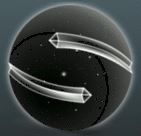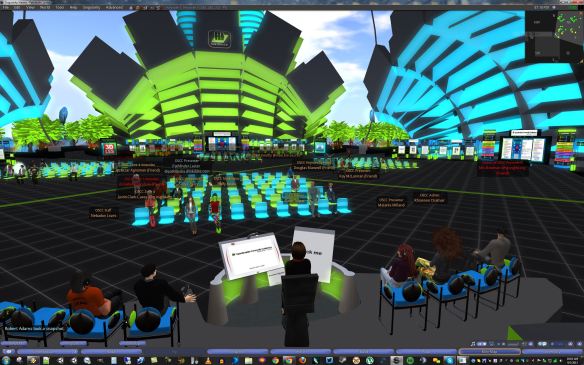 The OpenSimulator Community Conference (OSCC) is an annual conference that focuses on the developer and user community creating the OpenSimulator software. Organized as a joint production by AvaCon and the Overte Foundation, the virtual conference features two days of presentations, workshops, keynote sessions, and social events across diverse sectors of the OpenSimulator user base.
The OpenSimulator Community Conference (OSCC) is an annual conference that focuses on the developer and user community creating the OpenSimulator software. Organized as a joint production by AvaCon and the Overte Foundation, the virtual conference features two days of presentations, workshops, keynote sessions, and social events across diverse sectors of the OpenSimulator user base.
Last year’s conference was a fantastic experience, and I’m thrilled to be both attending and presenting again this year. All the inworld venue tickets are sold out, but if you can still register for a free streaming ticket and watch all the presentations live on Ustream.
Here’s what I’ll be presenting this year:
“You Only Own what you can Carry: How to backup and move your content between Second Life, Openim and Unity”
Saturday Nov 8 from 9:00am – 9:45am PST
In this hands-on workshop, I’ll be demonstrating exactly how to export your own user-created objects (both prim and mesh based) and move them between Second Life, Opensim and Unity. Attendees will watch my desktop via a live TeamViewer screenshare and follow along on their own using freely-available software.
Requirements: Inworld attendees should be using the OSCC recommended 32-bit Singularity viewer and have pre-installed both the free version of the Unity Editor and the free TeamViewer application. No previous technical expertise required, just a willingness to learn.
The crux of my workshop will be a live demonstration of me creating something in both Opensim and Second Life and then walking through exactly how to get it into a scene in Unity. I’ll also be demoing how to move content between Second Life and Opensim. If you’re worried all this might be overly complicated, I promise it will be a lot easier than you expect. Plus you’ll have the fun and “excitement” of watching me do all this live on my own desktop (what could possibly go wrong?). The key takeaway will be that the whole process is easy enough for anyone to learn how to do, regardless of your level of technical expertise.
If you can’t watch it live, no worries. My session will be recorded so you’ll be able to watch it later. I’ll update this blog post with a link to the recording once it’s online.
[UPDATE – Nov 9 2014 – Here’s the full video of my presentation]
I’ll also be a panelist later in the day on “The New Era of Content Protection in OpenSim” where I’ll be sharing my thoughts about DRM versus content licensing.
Hope to see you there!
Take care,
-John “Pathfinder” Lester













